- Home
- James Rollins
The Demon Crown: A Sigma Force Novel Page 36
The Demon Crown: A Sigma Force Novel Read online
Page 36
She pictured a secret lake above her head and noted the open hatch in the roof through which the water poured. The hatch must have been triggered when Kat pressed the wasp-shaped button, setting the wheel and wooden gears in motion to lower the ramp.
The old mechanism was frosted white, suggestive that the passing ages had petrified the wood with salt, like the logs Clara had patted earlier.
Only this wood still talked—or more aptly moaned.
The gears creaked ominously, while the revolving wheel groaned a low complaint.
The mournful tone sent a shiver through her. Or maybe it was the sudden chill. The air in the cavern was far colder, smelling of salt and dampness, along with something bitter and acrid.
Like an old campfire doused with water.
The team continued across the threshold into the cavern. The roof arched three stories overhead. The space’s volume easily matched that of the Chapel of St. Kinga, but within a few steps, it became clear this chamber was no cathedral to a saint.
The stone underfoot grew darker, blackened by old fires.
A number of piles dotted the floor.
Kat examined the closest. “Charred bones,” she concluded and cast her light across the scores of other mounds. Some were curled tightly; others stretched longer.
“Must be the remains of the miners who were trapped here.”
Monk had stepped over to a larger heap. “Their horses, too,” he added with a sad shake of his head.
Elena remembered the story of the miners and their horses, how they seldom, if ever, saw the light of day. Such an arrangement was a ready-made isolation ward. It was no wonder the mine had been able to contain the contagion released here.
And keep it secret.
As they tread carefully through the grave mounds, Clara made the sign of the cross, tapping her fingertips to her forehead, chest, and shoulders. Elena followed her example a second later, praying for protection.
Kat stopped to scuff a toe on the oily layer of soot surrounding a tall pile of ash. “To purge this place, they must’ve stacked wood in here, then flooded the chamber with lamp oil, before torching and sealing the cavern.”
Elena tried to imagine those trapped workers, studying the pattern of the mounds. She could read no panic in the spread, no rush toward the door. From what she could glean from Clara, the miners were a close-knit family. Most were probably too sick or recognized the threat they posed to the rest of the mine and sacrificed themselves for the greater good.
Elena made the sign of the cross again—only this time out of respect for the dead, knowing their suffering had saved the world back then by keeping this scourge from escaping the mine.
She looked across the bodies.
Here are the mine’s true saints.
“Come see this!” Sam called over from one side.
After entering, he and Dr. Slaski had chosen to avoid the graveyard and had shifted to the wall instead. A layer of soot obscured the lower quarter of the wall, as if those old flames had crashed like waves against there, blackening the stone.
As the rest of the group angled closer, the two men concentrated their lights higher. The bright beams seemed to penetrate the wall, igniting the stone to a rich ruddy glow.
Kat let out a small gasp, while Monk whistled sharply.
The two men stepped back, sweeping their lights higher and farther to either side.
“Amber,” Slaski said, glancing back to them. “It’s all amber.”
The shock of the sight drew everyone to splay their beams across the walls and roof. Everywhere they pointed, the stone absorbed the light and shone it back out with an inner fire.
“It’s like we’re in a bubble of the gemstone,” Elena whispered.
“Maybe we are.” Slaski traced his fingertips along the wall. “Feel how smooth it is.”
Elena did. “It’s as if the amber melted and cooled.”
“Exactly,” Slaski said. “Amber softens at 150 degrees Celsius. It becomes moldable. Modern fabricators use this trait to heat slivers and small pebbles of amber. Once soft, they fuse the rubble under high pressure into larger pieces.”
Kat stepped back and craned around at the huge expanse. “You’re saying that’s what happened here?”
“Only on a far grander scale.” Slaski’s voice grew awed. “If this cavern is truly the source of Mr. Smithson’s artifact, it would make this deposit hundreds of millions of years old, formed before tectonic forces pushed the continents into their current positions, when this region was a pine-covered coastline of the ancient Tethys Sea. Heat and compression from those tectonic forces could’ve squeezed the soft amber along this stretch of the coastline, until gas and pressure molded it into this giant bubble.”
“That’s all well and good,” Kat said. “But if this is indeed where James Smithson acquired his sample, where was it excavated from?”
Clara pointed her flashlight toward the back of the cavern. The wall there was all dug out and crumbled. They headed in that direction.
As they traversed the cavern, iron cartwheels and the heads of pick-axes appeared half-buried in mounds of ash. Elena pictured the abandoned mining equipment being set aflame, burning away until only these iron skeletons were left behind.
Next to her, Sam and Slaski continued their examination of the wall. It seemed the cavern had preserved other remains, ones far more ancient.
Sam’s footsteps slowed as he pressed his flashlight against the amber, setting it aglow. He came to a sudden stop, his voice hushed by awe and excitement. “My god, I think that’s an intact Cyllonium.”
They all clustered around him.
Floating in the amber was a fist-sized winged insect.
“It’s a giant cicada,” Sam explained. “From the early Cretaceous Period.”
They barely had a moment to examine it before the entomologist hurried forward.
“And look over here. A whole flock of Austroraphidia, an extinct species of snakefly from the same period.”
Elena stared across the stretch of wall, where the creatures appeared to have taken flight through the amber. Each fly was five inches long, carried aloft by wings twice that length.
Sam continued, moving along in fits and starts, his flashlight flicking here and there. “Kararhynchus, a genus of beetle from the late Jurassic . . . Eolepidopterix, an extinct giant moth . . . Protolepis, one of the first true butterflies . . .”
He led them through this prehistoric terrarium frozen in amber: lines of massive ants, a centipede as long as Elena’s arm, a giant spider that was the stuff of nightmares. Amid this encyclopedia of extinct bugs, beetles, flies, and moths were also preserved pieces of ancient forests. Twigs and branches. Primitive cones. Giant broad leaves. Elena paused at a huge flower, whose snow-white petals appeared as fresh as the day they had first budded.
But that wasn’t all.
Kat pointed her flashlight at a leathery skull the size of a bowling ball, with a pointed crocodilian jaw lined by shark’s teeth. “Definitely saurian,” she whispered.
Monk nodded. “It’s like someone took a blender to a piece of Jurassic history and preserved it all in amber.”
“And all of it appears to date back to the same time period as Smithson’s artifact,” Kat added.
Sam waved from a few yards ahead. “Over here,” he said, his voice now grimmer.
As they joined him, Elena caught his eye, noting a flicker of fear there. Her heart began pounding harder.
He pointed his flashlight’s beam deep into the amber, revealing the horror hidden there. Captured in the stone was a dense swarm of familiar shapes, their carapaces striped in black and crimson.
Soldier wasps.
“The Odokuro,” Sam pronounced. “They’re here.”
6:04 A.M.
So this is definitely the right place.
Kat was both relieved and horrified. For the past three minutes, she and the others had followed the curve of the wall. With every step, more and more incar
nations of this infernal species appeared, from tiny males to huge breeders. As the group progressed, the number of competing species receded, replaced by the ravaging horde, until only the Odokuro were left.
And it was plain to see why.
“Ugh.” Elena turned her face from the sight of a small lizard whose belly had been ripped open, bursting forth with a frenzied mass of wasps.
The Odokuro had clearly burned through its prehistoric environment, consuming and utilizing all the biomass before it.
Two members of the party showed little interest in this alarming tableaux. Instead, Slaski and Clara had ventured farther ahead. The museum director had stopped, dropping down to one knee.
As Kat approached, she heard him speaking angrily in Polish to Clara, plainly aggravated. “What’s wrong?” Kat asked.
Slaski stood with a final spat of Polish that had to be a curse. He quickly collected himself and pointed to the next expanse of wall. Several blocks had been crudely hacked free, cutting through the blackened section near the floor to reveal the fresh amber beneath.
“This was not the handiwork of the miners who died here,” Slaski explained. “But thieves who came later.”
Kat understood. Someone had come here after it was all burned. Opportunists who must have heard of the priceless deposit and risked coming here in secret afterward.
“Black miners,” Clara explained, sounding as upset as Slaski. She glanced back to the entrance. “Maybe it is why someone went to such efforts to seal this place later.”
Monk leaned to Kat. “It could also explain how James Smithson had acquired his artifact. Maybe he bought it off one of these black miners.”
She nodded.
If so, Smithson probably learned of the tragedy here from the same source.
Kat pictured the first group of miners here, imagining their horror as they cracked through the prehistoric bones trapped in the amber, releasing and aerosolizing the cryptobiotic cysts. The men’s deaths must have been agonizing as those cysts hatched inside them, releasing a scourge of larvae—until finally their hollowed-out bodies burst forth with adult wasps.
While Kat stopped to inspect the damage along the wall, Sam continued past, sweeping his light high and low. From the corner of her eye, she noted him stop, back up a step, then lean closer to the wall, checking several spots with his flashlight.
He finally called over to them. “Guys, something . . . something’s wrong here.”
Now what?
Kat led the others to him, drawn by his dismay. As they joined him, their combined illumination brightened the section of amber before them, revealing swaths of Odokuro in all their horrendous incarnations.
She frowned, unable to fathom what so distressed the entomologist.
He drew closer to the wall, fixing his beam upon a few specimens. “I think these were already dead before they were trapped in the amber.”
“Why do you think that?” she asked.
“If you study them closer, you can see they’re malformed. Look at this soldier. Its exoskeleton has collapsed. The surrounding amber is stained.”
Kat squinted, while Elena lifted her reading glasses into place.
He’s right.
The wasp looked crushed, its shell cracked. A vague wisp darkened the surrounding amber, as if it were the insect’s spirit leaving its dead corpse.
“I think that’s blood,” Sam said. “As if the wasp bled out before it died.”
Monk peered closer, too. “Could it have been crushed by the pressures that molded and formed this bubble?”
“No.” Sam stepped back. “Look how all the wasps throughout this section show the identical damage, while the few other species found in this same section—Palaeolepidopterix over here, Tektonargus over there—show no such mutilation or injury.”
Sam faced them, his expression firm with certainty. “Whatever killed them did so before the amber preserved their bodies.”
Kat slowly nodded, accepting his conclusion. “If we could find out what that was . . .”
She stared across the group. She didn’t need to state the obvious. Here was the very purpose of this journey. Something in the prehistoric past had kept this apex predator from spreading, from completely dominating the ancient world.
But what could it be?
They continued forward as a group. Even Slaski and Clara followed, frowning at them, perplexed by their sudden urgency and distress.
Their lamps lit up the neighboring amber wall, revealing the ongoing destruction of the Odokuro. No incarnation was spared. Tiny scouts by the thousands formed mountainous piles of carcasses. More soldiers lay broken and shattered. A score of breeders hung in mists of their own blood.
But what was the source of this damage?
Several yards ahead, a flash of color on the floor caught Kat’s attention. She swung her flashlight in that direction. By now, others had noted it, too, adding their lights.
It was a body—but not the charred remains of a miner.
The dead man’s clothing was intact, his skin pale and sunken, contrasting with his coarse dark hair and beard. His expression—forever preserved by the high-sodium atmosphere—was one of shock and horror. A pick-axe lay nearby, long abandoned. Not that the man could have wielded it as his wrists were bound by rope.
The cause of his death was easy enough to discern.
His throat had been slashed open.
The reason for his execution was also evident.
Not far from his body stood a waist-high cube of amber, hacked from the nearby wall. It would have been worth a king’s ransom back then.
“One of the black miners,” Slaski said.
Clara shook her head sadly. “Such thievery was dealt with harshly.”
Sam had shifted over to examine the damaged section of the wall, which appeared to be darkly discolored, but not from the old fire. He then crossed over to the block of amber that matched that hue. He rested his flashlight atop the cube and began to kneel beside it—then he cried out, stumbling backward, falling on his rear end.
Under the glow of Sam’s flashlight, the block glowed like a lamp. The shine revealed the treasure inside. No wonder the dead miner had attempted to steal such a huge piece. How could he not with what was preserved inside it?
Sam rolled to his knees, never taking his eyes from the sight. His words were forlorn and dismayed. “Professor Matsui was wrong . . . everyone was wrong.”
36
May 9, 1:05 P.M. JST
Fujikawaguchiko, Japan
“We’re far deeper down than just one floor,” Ken said as he stepped from the elevator onto Sublevel 5. He had felt the pressure change in his ears during the minute-long descent from the fourth subbasement to this lowermost section.
Even the temperature down here was several degrees cooler.
He checked the short corridor that led to a set of steel sliding doors.
Empty.
He waved for Seichan to follow him out. Dressed in a surgical gown and loose mask, she brusquely escorted Dr. Hamada by the arm. She had her other fist pressed against his side, where she threatened him with a hidden scalpel.
“How far down are we?” Seichan asked their captive.
“Seven . . . seventy meters,” Hamada stammered.
Ken inwardly cringed. That was equivalent to a twenty-story building buried underground. “Why so deep?”
“To serve as a bunker for our most sensitive work. It’s said this level could withstand a tactical nuclear strike. But it was also chosen for the natural insulation offered by the unique geology of this location.”
“What do you mean?” Seichan’s forehead shone with sweat, revealing the level of pain she was still experiencing—even after the larval load inside her had grown quieter.
“You’ll see for yourself.” Hamada waved to the sliding doors. “It’s on the way to this level’s emergency escape station.”
As they crossed the short distance, the doors glided open before them, revea
ling a circular lab identical in size to the one above. It had already been evacuated. A blinking green arrow pointed to another exit on the far side, likely leading to Hamada’s promised emergency exit for this level’s key personnel.
As they hurried toward it, Ken searched around him.
To the right and left were adjoining rooms holding banks of caged laboratory rats and rabbits. The workstations in the center held rows of centrifuges, thermocyclers, and autoclaves. Shelves were stacked with all matter of glassware, pipettes, and bottles of molecular enzymes, reagents, and buffers.
Ken’s feet slowed as he noted two significant labels: CAS9 and TRACRRNA PLASMID.
He turned to Hamada. “You’re performing Crispr/Cas here.”
Hamada shrugged.
Seichan looked questioningly at Ken.
He explained: “It’s a technique for ultrafine genetic engineering. With this equipment, you could cut and splice DNA as accurately as cutting letters out of an encyclopedia. And nearly as effortlessly.”
“What are you experimenting with here?” Seichan asked, drawing them momentarily to a stop. From the urgency in her voice and glint in her eye, she clearly hoped it had something to do with a cure.
“We’re doing a deep study on the wasps’ genetics,” Hamada said. “To tease out the secret to their astounding longevity.”
Cold dread iced through Ken. “You mean you’ve been experimenting with the section of the insect’s DNA that they borrowed from the Lazarus microbes that infected them ages ago.”
“Precisely. Over the past decade, we’ve had the chance to thoroughly study the borrowed fragments of DNA and found the Odokuro utilize them in a unique and amazing manner. The discovery holds great promise not only for life extension, but possibly even resurrection.”
Ken cast a harsh look at the man. “You’re insane.”
“I prefer forward-thinking,” Hamada countered. “Unfortunately, it’s taken until the development of sophisticated genetic tools—like the Crispr/Cas technique—before we could proceed with clinical trials.”
The doctor nodded to a bank of dark windows near the doors leading out.

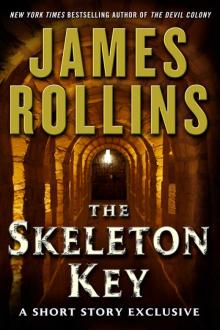 The Skeleton Key
The Skeleton Key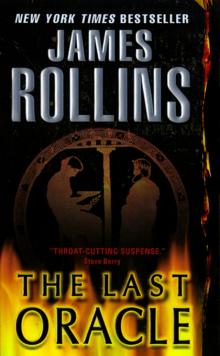 The Last Oracle
The Last Oracle The Judas Strain
The Judas Strain Black Order
Black Order Sandstorm
Sandstorm Ghost Ship
Ghost Ship The Devil Colony
The Devil Colony Subterranean
Subterranean The Doomsday Key
The Doomsday Key The 6th Extinction
The 6th Extinction Bloodline
Bloodline Jake Ransom and the Howling Sphinx
Jake Ransom and the Howling Sphinx The Midnight Watch
The Midnight Watch Map of Bones
Map of Bones The Demon Crown
The Demon Crown Deep Fathom
Deep Fathom Sigma Guide
Sigma Guide Kowalski's in Love
Kowalski's in Love Jake Ransom and the Skull King's Shadow
Jake Ransom and the Skull King's Shadow Excavation
Excavation The Seventh Plague
The Seventh Plague Altar of Eden
Altar of Eden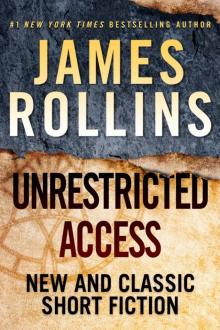 Unrestricted Access: New and Classic Short Fiction
Unrestricted Access: New and Classic Short Fiction Indiana Jones and the Kingdom of the Crystal Skull
Indiana Jones and the Kingdom of the Crystal Skull Crucible
Crucible The Eye of God
The Eye of God The Bone Labyrinth
The Bone Labyrinth The Last Odyssey: A Thriller
The Last Odyssey: A Thriller Unrestricted Access
Unrestricted Access Amazonia
Amazonia Blood Brothers: A Short Story Exclusive
Blood Brothers: A Short Story Exclusive Map of Bones: A Sigma Force Novel
Map of Bones: A Sigma Force Novel The Skeleton Key (sigma force)
The Skeleton Key (sigma force)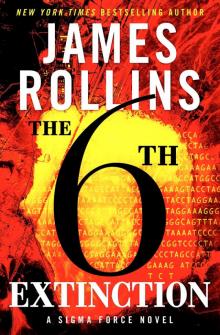 Sigma Force 10 - The Sixth Extinction
Sigma Force 10 - The Sixth Extinction Innocent Blood
Innocent Blood Map of Bones sf-2
Map of Bones sf-2 The Eye of God: A Sigma Force Novel
The Eye of God: A Sigma Force Novel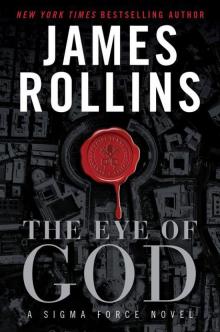 The Eye of God: A Sigma Force Novel sf-9
The Eye of God: A Sigma Force Novel sf-9 The Pit
The Pit Indiana Jones and the The Kingdom Of The Crystal Skull
Indiana Jones and the The Kingdom Of The Crystal Skull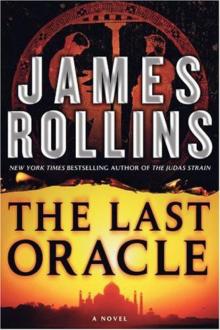 The Last Oracle (2008) sf-5
The Last Oracle (2008) sf-5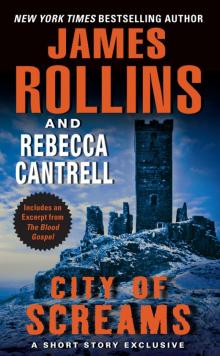 City of Screams
City of Screams The Doomsday Key and The Last Oracle with Bonus Excerpts
The Doomsday Key and The Last Oracle with Bonus Excerpts The Judas Strain sf-4
The Judas Strain sf-4 Blood Infernal
Blood Infernal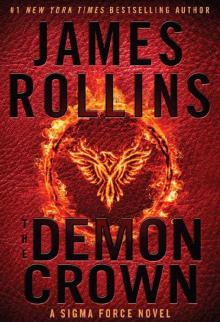 The Demon Crown: A Sigma Force Novel
The Demon Crown: A Sigma Force Novel War Hawk: A Tucker Wayne Novel
War Hawk: A Tucker Wayne Novel SANDSTORM sf-1
SANDSTORM sf-1 Bloodline: A Sigma Force Novel
Bloodline: A Sigma Force Novel Amazonia: a novel
Amazonia: a novel The Last Oracle: A Sigma Force Novel
The Last Oracle: A Sigma Force Novel City of Screams (the order of the sanguines)
City of Screams (the order of the sanguines) Ghost Ship: A Sigma Force Short Story
Ghost Ship: A Sigma Force Short Story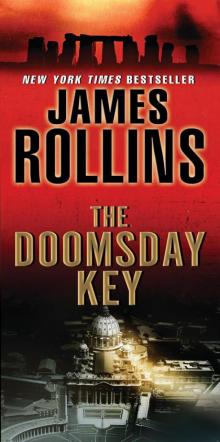 The Doomsday Key: A Sigma Force Novel
The Doomsday Key: A Sigma Force Novel